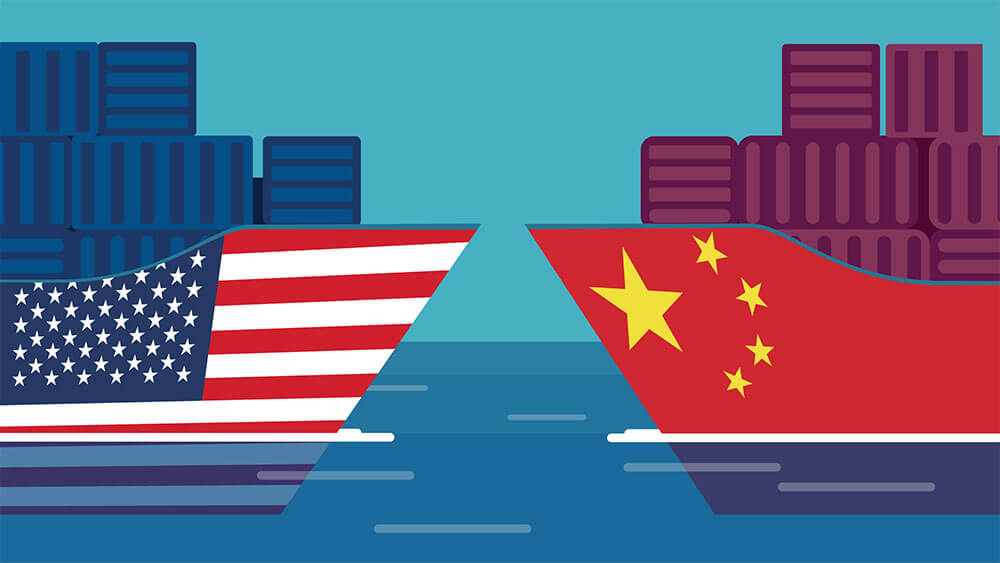In the seafood industry, President Trump’s tariffs are sinking business. More than 90 percent of the seafood consumed in the United States is imported, and about 40 percent of the 25,000 attendees at Seafood Expo North America also come from outside the country. Since the new tariffs (or taxes) imposed on goods imported from China and other countries have taken effect this year, some of the show’s regular exhibitors have cut back on the amount of space they’re purchasing for the March 2019 show.
“Currently, we’re not seeing exhibitors completely pulling out of the show, but some from affected countries are reducing space,” said Mary Larkin, executive vice president of Diversified Communications, which produces Seafood Expo North America. “Asian companies that provide seafood and process seafood have all been hit by tariffs, and they’re reducing their space to be on the safe side. It could get worse, so we’re being cautious.”
Trade shows and events in a number of industries are experiencing similar issues, as U.S. and Asian businesses watch to see how their governments’ trade conflicts will play out. Overall travel from China to the United States has decreased since the tariffs took effect — bookings are down nearly 10 percent compared to 2017 and the drop could cost the U.S. economy $500 million, according to travel information company ForwardKeys. U.S. show organizers expect their attendance from Asia may drop accordingly.
For instance, the Toy Association’s Toy Fair, held at New York City’s Javits Center each February, is sold out for 2019 but organizers expect attendance challenges in 2020 if the trade war continues. “Our members source the majority of their toys from Chinese manufacturers,” Steve Pasierb, president and CEO of the Toy Association, told Convene. “If the tariffs continue or increase, we expect to see changes next year. Members may drop out of the show and exhibitors may reduce their space because their businesses have been reduced by tariffs. I expect we may also see a drop-off in attendance from Asia.”
International attendees and exhibitors at some shows have reported visa delays and denials over the past year, and current tariffs are set to rise from 10 percent to 25 percent if China and the United States can’t reach a deal by March. It’s a situation that signals mounting concern among show organizers — and provides an opportunity to develop new strategies for member and attendee education, as well as pursuing new markets to remain successful.

Steve Pasierb, president and CEO of the Toy Association, says event organizers “can’t rest on your laurels, because outside forces, such as the tariffs, can change the situation at any time.”
Wait, Watch, and Plot Plan B
In a number of industries, companies have seen some negative effects from the tariffs, but the impact has not yet led them to stop attending industry events in droves. For instance, “although tech companies are concerned about tariffs, the Consumer Electronic Show (CES) 2019 remains on target to be the world’s largest tech show with over 4,500 exhibitors, 180,000 attendees and roughly the same Chinese presence,” said Gary Shapiro, president and CEO of the Consumer Technology Association, which owns CES.
Over the past year, as a result of the tariffs, members of the Toy Association have seen sharp increases in raw materials, component parts, and finished products, Pasierb said. So far, all those increases have been absorbed by U.S. manufacturers: They haven’t been able to pass those increases on to retailers because retail deals were already set. But that could change quickly: “Toys are very price sensitive,” Pasierb says. “If everybody sees 25-percent increases and all the toy prices go up, we’ll have a big problem.”
In that case, “the real problem may be for our 2020 show,” Pasierb said. “Two places we’ll be worried about will be trade guest attendance and whether we’ll lose any exhibitors in the Hong Kong or China pavilions.”
As organizers of events whose industries are also feeling the effects of the trade conflict watch to see how it plays out, they can take actions to minimize potential damages and continue serving their audiences and industries well. Here are four steps some organizations are taking to keep their shows afloat through the trade battles.
1. Seek new audiences. When Asian companies reduce their exhibit space at Seafood Expo North America, that means there’s more space available for those in countries like India, which haven’t been affected by tariffs, Larkin said. For show organizers, it’s a chance to approach new markets that may provide viable alternatives to customers.
“If we lose buyers and sellers from Asia, we will start looking at how to attract more buyers and sellers from Europe, Vietnam, and South America,” Pasierb said. “While those areas don’t have the toy infrastructure that there is in China, we sell about 3 billion toys in America every year, so they’ve got to come from somewhere. You have to market against the opportunity.”
For instance, some Toy Association members already are outsourcing manufacturing to companies in Vietnam and other locations outside China, which opens up new avenues for potential Toy Fair exhibitors, Pasierb said. U.S. companies are seeking manufacturers outside China, he said, “but it’s going to take a very long time to do it. Our industry has spent decades developing a specialized manufacturing base in China and a lot of the factories they work with are highly specialized and simply don’t exist elsewhere.”
2. Provide relevant education. As seafood industry leaders wait cautiously to see how the trade situation will shake out, Seafood Expo is ramping up education to help them make informed decisions. “We’re providing education at the CEO level about the impact of trade wars and what the impact could be,” Larkin said. “We’re bringing in high-level people who can answer their questions and help them make decisions.”
In developing educational programs to help members navigate the trade war, Larkin said that it’s important to remember how far-reaching the effects of tariffs can be. “It’s not just that product and how it’s been hit; it’s also the entire supply chain,” she said. “Think beyond your customer to their supply chain and their vendor chain.” For instance, in Maine, lobster farmers are dealing with China’s retaliatory tariffs placed on lobster. But they’re also paying more for processing and transportation, due to tariffs on aluminum and steel, which affects lobster traps and equipment used in processing.
3. Increase lobbying efforts. At the Toy Association, government affairs leaders and committees are closely watching tariff talks between U.S. and China representatives and considering whether and when they should focus on lobbying efforts.
“Tariffs present a huge risk to our industry, so it’s a huge risk for our trade show,” Pasierb said. “The U.S. market is the world’s biggest toy market, but if the United States has all these barriers, that may change.”
4. Expand show offerings. While Toy Fair has been sold out for the past four years, organizers are resisting the temptation to become complacent. “You can’t rest on your laurels, because outside forces, such as the tariffs,” Pasierb said, “can change the situation at any time.”
As such, Toy Fair is looking for ways to add new facets to the show. For instance, the show’s Creative Factor, an educational area for the design and inventor community, will expand offerings and take over one of the lobbies in the Javits Center for the 2019 show. “We’re moving all the designers and inventors, the entrepreneurs of our industry, to a bigger space and significantly expanding their program to give the show more of that entrepreneurial feel,” Pasierb said. “It’s important to keep evolving. As markets change, or if there’s a global decline, the show needs to be able to survive.” .
Nancy Mann Jackson is a freelance writer in Birmingham, Alabama.

